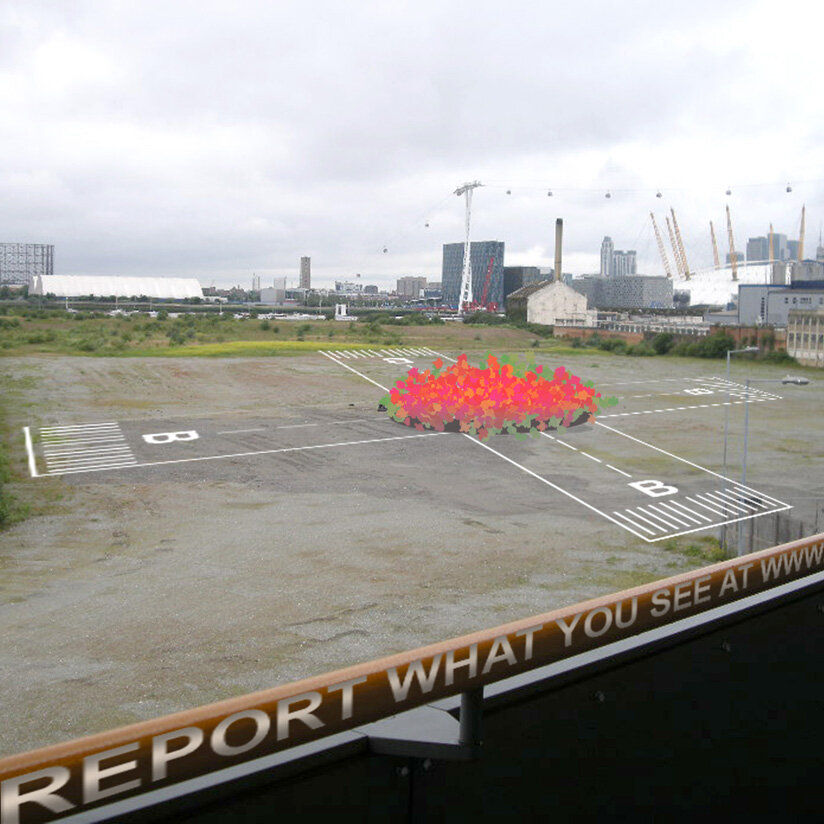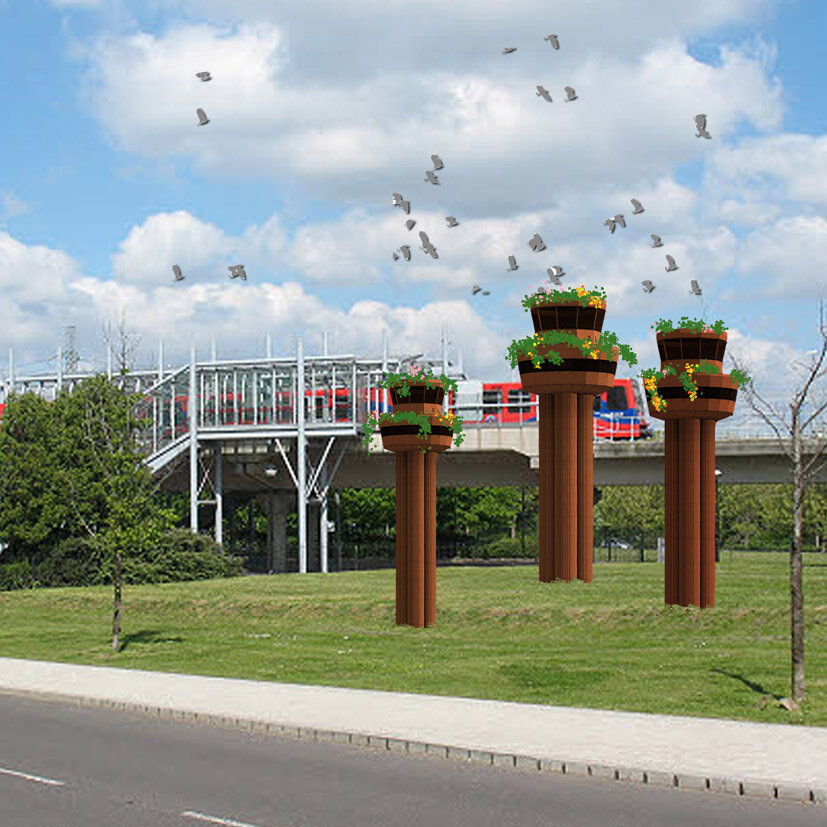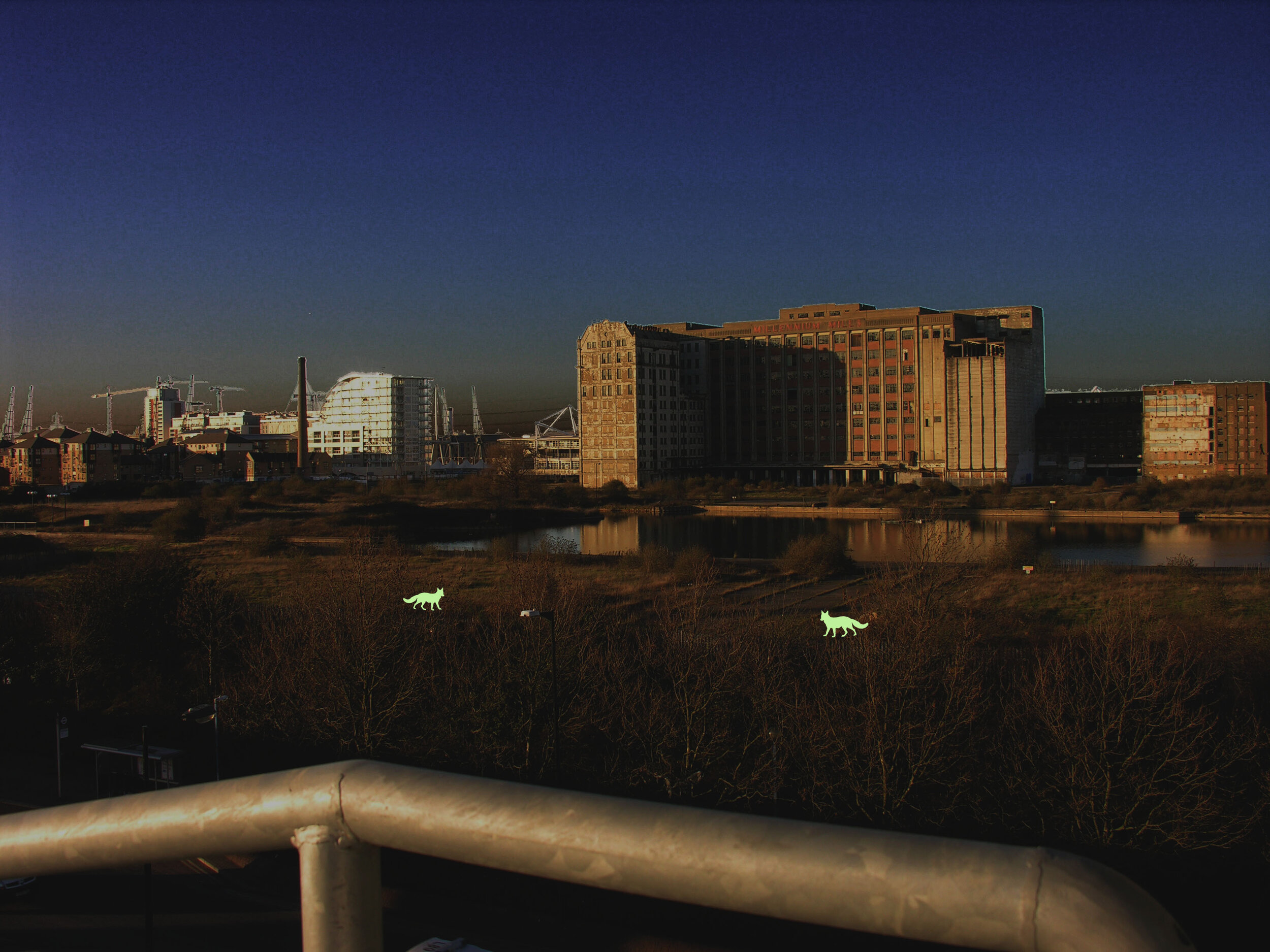
Royal Docks Habitats
These concepts aim to connect city dwellers with their surrounding biodiversity. A series of site specific, graphic installations will use imagery from the immediate industrial landscape. The project uses bold, innovative ideas to create habitats, get wildlife noticed and offer the public direct participation in London’s wildlife records.
Art, bees and biodiversity The concept uses iconic design language to focus on the plight of bees, currently under threat globally but also locally in East London’s diminishing brownfield sites, home to some rare species. The visual language plays with preconceptions as familiar graphic imagery is translated into wildlife habitats. These will be at once symbolic and practical habitats. They will offer at times temporary, seasonal sanctuary for the bees and their wildlife neighbours, but some artworks will aim to provide permanent, evolving habitats that over time could exist nowhere else. The specific focus on bees would point to an understanding of the global issues in an area connected to the outside world via aviation.
Royal Docks Habitats uses an ironic play on juxtapositions of scale, perceptions of traditional users and their place in the hierarchy of the skies. There is a strong use of the design language of international travel in many of the ideas, referencing the nearby London City Airport. Crucially, in recognition that our cities are increasingly being explored from the air, via the internet and not just your plane seat, these iconic art installations will quickly become part of the identity of the area. It is important to underline that empty spaces are rarely empty, many species occupy these spaces happily in the absence of interference.
This is a moment in time where open areas can be launchpads for creativity in a way that is less possible in denser parts of London or established, organised wildlife centres. Also, as they steadily become developed, many of the sites will not exist in the near future as habitats and blank canvass opportunities in the way that we know them today.The project has already established links with GiGL, or Greenspace Information for Greater London, the Capital’s environmental records centre. People can go online and record sightings of flora and fauna to be part of a wider programme that not only creates a sense of belonging to a network of enthusiasts, it also builds a database of wildlife activity that informs local and regional policy via Biodiversity Action Plans. GiGL has long, established partnerships with, among others, London Borough of Newham and the DLR.
The Royal Docks Habitats project seeks to enhance the biodiversity of these regions, but also hopes that using art to raise awareness at this stage could serve to secure alternative habitats for brownfield species forced to live alongside a new, emerging urban landscape.Mooch has recently been working with Rosetta Arts in West Ham on developing some of these early ideas, testing feasibility around the Royal Docks area of East London and looking at ways of engaging artists based in Newham. Meetings have taken place in 2013 with DLR staff to secure in kind support for installations in and around DLR stations and establish basic principles for wildlife safety considerations in a public transport culture.

"Helicopter" landing pad with flowers for bees beside City Airport

Signage for rare bees for inaccessible brownfield site

Runway for bees to a floral destination under City Airport flight path

Bee havens in classic airport conning towers beside City Airport






